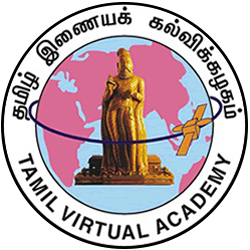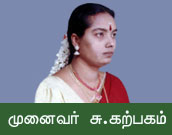Primary tabs
-
D06142 Lesson 2 Folk Dances
This lesson is about the folk dances of Tamil Nadu. Folk dances are popular dance forms. Performed by the common folk, they reflect the traditions and customs of the region of their origin. While classical dance forms are governed by rules, folk dances are spontaneous and do not require extensive professional training.
This lesson focuses on 4 folk dances of Tamil Nadu. They are Karagattam, Kavadiyattam, Poikaalkudirai Attam and Mayilaattam.
Karagattam or Karagam is the most famous of the folk dances of the Tamils. There is a mention of the term “Karagam” in “Tholkappiyam” and “Puranaanooru”. In “Silappathigaram”, there is a description of 11 dances performed by Madhavi. One of these called the “Kudakoothu” is similar to karagattam. Karagattam is associated with the worship of goddess Mariamman. The performer carries an urn decorated with flower arrangement topped by a paper parrot on his or her head and dances to the accompaniment of “nayyandi melam”. The skill lies in balancing the urn through intricate steps and body movements. There are two types of Karagams: viz. Sakthi karagam and Aatta Karagam. While Sakthi karagam is performed during temple rituals, Aatta Karagam is purely for entertainment.
Kaavadi Aattam is another popular folk dance. This dance is associated with the worship of Lord Muruga. The term “kaavadi” can be traced to a song in the “Puranaanooru”. It is believed that, the ancient Tamils who set out on religious pilgrimages, carried the offerings to the god on either end of a long stick, which was balanced on their shoulders. They often danced and sang in praise of the gods in order to ease the difficulties of a long journey. The kaavadi performer carries a bamboo canopy fixed to a pole on his shoulders. The canopy is decorated with saffron cloth and peacock feathers. Pots filled with milk or flowers are attached to either ends of the pole. There are 2 types of Kaavadiattam: viz Bakthi Kaavadiaattam and Aatta Kaavadiaattam. Bakthi Kaavadiaattam is performed during the festivals of Lord Muruga while Aatta Kaavadiaattam is for entertainment.
Poikkaal Kudirai Aattam or Dummy horse dance is yet another popular dance form. This dance can be traced to a dance called “Marakkaalaadal” performed by Maadhavi in “Silappathigaaram”. There is also a refernce to this dance in “Tholkappiyam”. The performer bears the figure of a horse which is suspended from the shoulders and tied to the hips. He or she also dons wooden legs or stilts which sound like the hooves of a horse. This dance is performed to the accompaniment of a musical instrument called the “kondalam”. Poikkaal Kudirai Aattam is performed during village festivals, marriage processions and political rallies.
Mayilaattam is a dance that is performed by girls. The dancer dons a clay gear of a peacock, resplendent with peacock feathers and a head-dress completely fashioned with a beak. This beak can be opened and closed with the help of thread attached to it and manipulated from within by the performer. This dance is so popular that it has found a place in Baratanatyam. However, the mayilaattam performed in Baratanatyam adheres to the classical tradition and is not spontaneous like the folk version. Mayilaattam is performed to the accompaniment of “nayyandimelam”.


